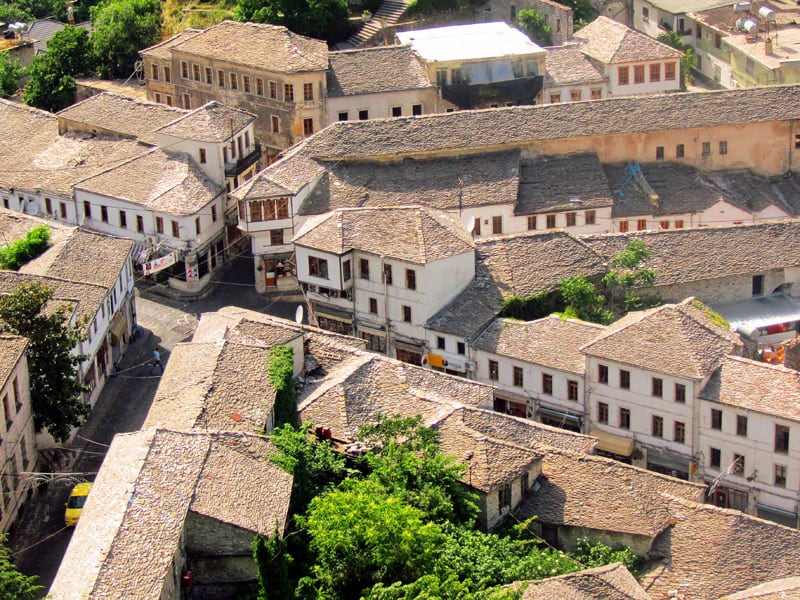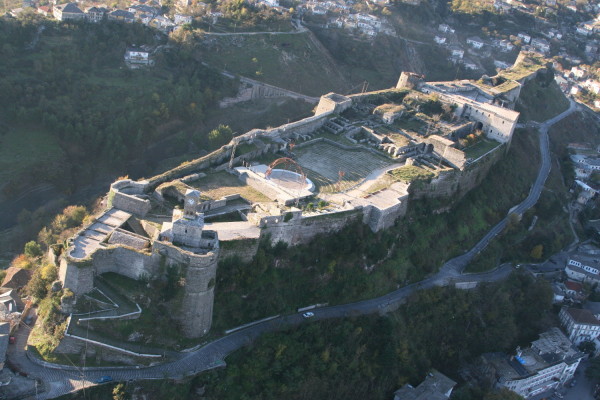The city of Gjirokastër has been settled as early as the Iron Age. Greek tribes were the earliest settlers in the area. The city walls dating from the 3rd century AD are still standing today. Between the 6th to the 12th century, Gjirokastër developed into a major commercial center. It was known as that time as Argyropolis.
Gjirokastër was part of the Byzantine Empire until 1417, when it became part of the Ottoman Empire. Under the Ottomans, there was still a Christian neighborhood with Gjirokastër which existed even into the 17th century.
In the 19th century, Gjirokastër became the center of an Albanian National Awakening. During the First Balkan War of 1912-13, it was captured by Greece following the retreat by the Ottomans. However the city was given to Albania under the Treaty of London of 1913.

As a fine example of Ottoman style architecture, this “City of a thousand steps” comprises hundreds of Ottoman-style tower houses with distinctive “tule,” turret roofs, wooden balconies and whitewashed stone walls. Dominated by the sheer flanks of its vast castle, Gjirokastra (Gjirokastër) is a magical city with a tumultuous past. From feudal stronghold, to Ottoman jewe, to Italian colony, the city has known many rulers and has inspired poets, authors and artists alike.
Also known by many as the “City of Stone,” Gjirokastra (Gjirokastra) is a developing center for cultural heritage tourism. A walk through its network of cobbled streets that climb steeply out of the bazaar will transport you back in time. A visit to its vast 13th-century castle brings adventurous tales of medieval rulers as well as providing context to Albania’s period of Communist rule. The castle contains a military museum featuring captured artillery and memorabilia of the Communist resistance against German occupation, as well as a captured United States Air Force plane to commemorate the Communist regime’s struggle against the imperialist powers. The northern part of the castle was turned into a prison by King Zog’s government (1928-1939) and housed political prisoners during the communist regime. Visitors can also visit the Ottoman bazaar and neighboring mosque, which dates from 1757.
Places of Interest in Gjirokastër
Ethnographic Museum
Gjirokastër Castle
Old Bazaar
Zekate House
 Balkan Incoming DMC Travel news, destinations and options in Balkan region
Balkan Incoming DMC Travel news, destinations and options in Balkan region



